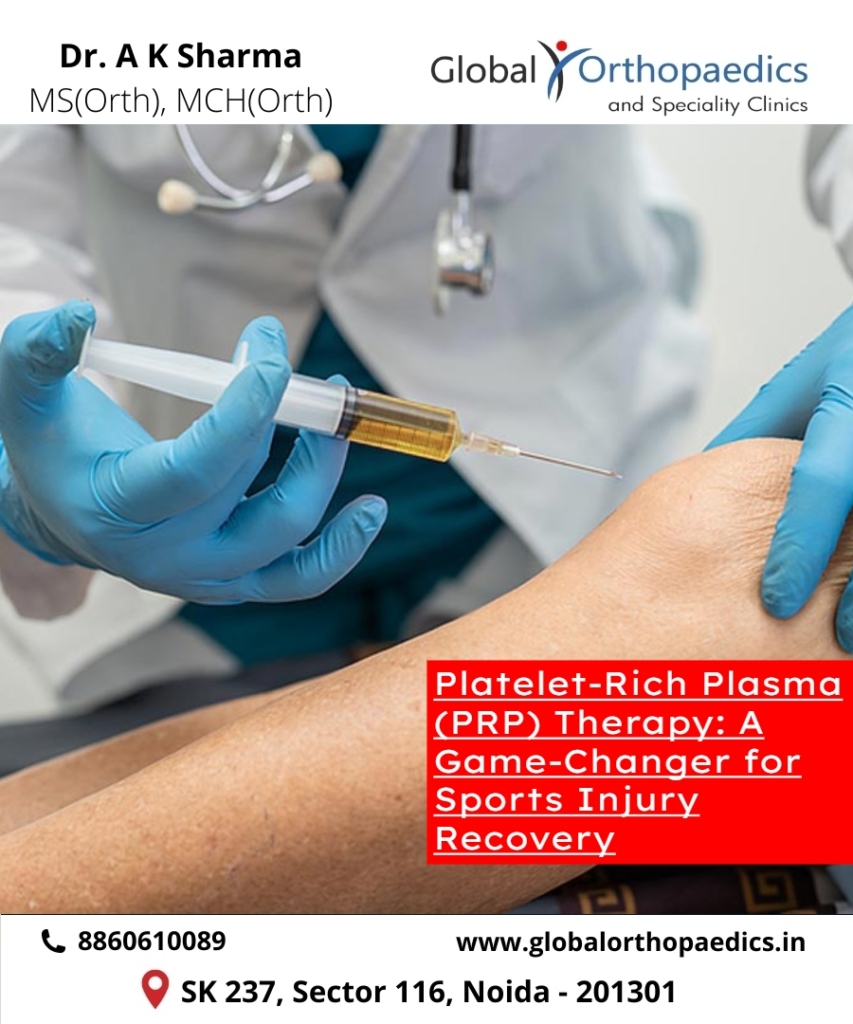Sports injuries can be a significant setback for athletes of all levels, impacting both performance and overall well-being. While traditional treatments like rest, ice, compression, and elevation (RICE) remain crucial, advancements in regenerative medicine have introduced innovative approaches to accelerate recovery and enhance performance. One such breakthrough is Platelet-Rich Plasma (PRP) therapy, a cutting-edge technique that harnesses the body’s natural healing mechanisms to promote tissue repair and regeneration.

How Does PRP Therapy Work?
PRP therapy involves extracting a small volume of the patient’s own blood, which is then processed to concentrate platelets. Platelets are tiny blood cells that contain a high concentration of growth factors, essential proteins that stimulate cell growth and tissue repair. This concentrated platelet solution, or PRP, is then injected directly into the injured area.
Benefits of PRP Therapy for Sports Injuries:
- Accelerated Healing: PRP therapy can significantly accelerate the healing process of various sports injuries, including tendonitis, ligament sprains, muscle strains, and even some cartilage injuries.
- Reduced Pain and Inflammation: By stimulating the body’s natural healing response, PRP therapy can effectively reduce pain and inflammation associated with sports injuries.
- Improved Tissue Regeneration: PRP therapy promotes the growth of new blood vessels and stimulates the production of collagen, a key component of tendons and ligaments, leading to improved tissue quality and function.
- Reduced Reliance on Surgery: In many cases, PRP therapy can be used as an alternative to surgery, allowing athletes to avoid the risks and recovery time associated with invasive procedures.
- Minimally Invasive: PRP therapy is a minimally invasive procedure with minimal risks and a short recovery time.
Applications of PRP Therapy in Sports Medicine:
PRP therapy has shown promising results in the treatment of a wide range of sports injuries, including:
- Tendonitis: Conditions like tennis elbow, golfer’s elbow, and Achilles tendinitis can be effectively treated with PRP therapy.
- Ligament Sprains: Sprains of the ankle, knee, and shoulder can benefit from PRP injections.
- Muscle Strains: PRP therapy can help accelerate the healing of muscle strains and tears.
- Cartilage Injuries: In some cases, PRP therapy can be used to treat minor cartilage damage in joints.
Choosing the Right Treatment Center:
Selecting the right healthcare provider is crucial for successful PRP therapy.
- Look for experienced doctor specializing in sports medicine.
- Inquire about experience with PRP therapy and success rates.
- Consider seeking opinions from multiple providers to find the best fit for your specific needs.
If you’re considering PRP therapy for a sports injury, consult with Dr. A K Sharma – a qualified sports injury doctor or visit a sports injury center for a comprehensive evaluation and personalized treatment plan. Book appointment today!


